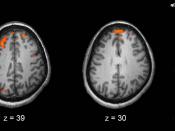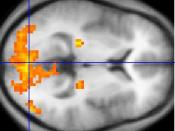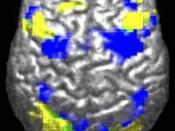INTRODUCTION
Functional magnetic resonance imaging (fMRI) is an imaging technique that plays an important role in determining brain functions and some brain disorders. It is most used by neuroscientists and psychiatrists.
The purpose of this report is to discuses the functional magnetic resonance imaging (fMRI) technique and its applications in the medical field.
The report begins with brief historical information and an explanation of the physics behind fMRI. This is followed by the current medical applications of fMRI. Finally, some future developments of fMRI are presented.
I. BACKGROUND
A. History of Functional Magnetic Resonance (fMRI)
The phenomena of nuclear magnetic resonance (NMR), on which fMRI relies, was discovered in the late 1940s. Under a magnetic field, the nuclei lose energy in form of NMR signals by the diffusion of protons.
Thulborn et al. were doing some researches on solutions and discovered that the change in blood actually is a result of paramagnetism of deoxyhaemoglobin, a haemoglobin that lakes oxygen.
Ogawa et al. suggested that the level of blood oxygenation can be used in imaging and monitoring the changes in tissues oxygenation.
In 1992, the interests increased in fMRI and researches were done to understand the brain functions involving motor skills, such as finger tapping, as well as recognizing the sound and faces. (6:2)
B. Nuclear Magnetic Resonance (NMR)
fMRI relies on the phenomena of nuclear magnetic resonance (NMR). The hydrogen nuclei in water (H2O) are spinning and thus having a magnetic moment. Under a magnetic field, hydrogen nuclei process around the direction of the magnetic field. Some of the nuclei spin parallel while the others spin antiparallel to the direction of the magnetic field. However, the number of the parallel spinners is slightly greater than the number of the antiparallel spinners. The net parallel magnetization is called longitudinal magnetization and...


